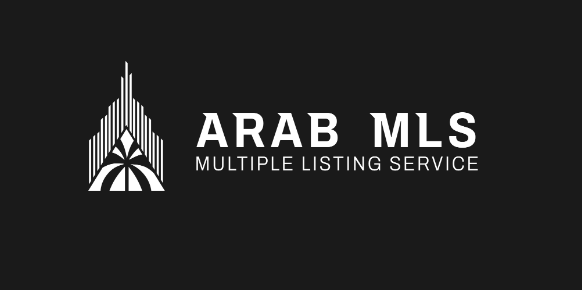As global awareness around climate change and environmental responsibility grows, the real estate industry is undergoing a significant transformation. Homebuyers and investors are increasingly prioritizing eco-friendly and energy-efficient features in their purchasing decisions. In response, sustainability is becoming a key focus in how properties are marketed—and the Multiple Listing Service (MLS), a cornerstone of real estate transactions, is evolving to reflect this trend.
The Rise of Sustainable Living
Sustainability in housing refers to practices and features that minimize environmental impact, reduce energy and water consumption, and promote healthier living environments. These features can range from solar panels and energy-efficient appliances to low-flow plumbing and sustainable building materials.
The shift toward greener homes is driven by both consumer demand and regulatory changes. Many governments and municipalities now offer incentives for sustainable building practices and retrofits, further pushing sustainability to the forefront of property marketing. According to the National Association of Realtors (NAR), more than 60% of Realtors reported that promoting energy efficiency in listings is valuable to buyers. 
The Evolving Role of the MLS
The MLS is a centralized database used by real estate professionals to share property listings and details. Traditionally, it included basic information like square footage, location, price, and number of bedrooms or bathrooms. However, as buyer priorities evolve, MLS systems are adapting to include sustainability-related data.
Many regional MLS platforms now allow for the inclusion of “green fields” or dedicated sections for sustainability features. These fields enable agents to highlight elements such as:
-
ENERGY STAR-rated appliances and windows
-
Solar photovoltaic (PV) systems
-
LEED or other green certifications
-
Insulation ratings
-
Smart thermostats and energy monitoring systems
-
EV charging stations
-
Water conservation systems (e.g., rainwater harvesting, xeriscaping)
By making this information easily accessible, MLS systems empower buyers to make informed decisions that align with their environmental values and long-term cost savings.
Benefits for Buyers and Sellers
For Buyers:
Sustainable features are not just environmentally responsible—they also offer tangible economic benefits. Energy-efficient homes often result in lower utility bills, and some even qualify for tax credits or rebates. For environmentally conscious consumers, having this data front and center in MLS listings accelerates the search process and builds trust in the transaction.
For Sellers:
Highlighting green features can differentiate a property in a competitive market. According to a 2023 Zillow Consumer Housing Trends Report, homes with energy-efficient upgrades sold faster and for slightly more money than comparable properties without such features. Sellers who proactively include this information in MLS listings may find a broader, more motivated buyer pool.
Challenges and Considerations
Despite the growing importance of sustainability in real estate, several challenges remain in fully integrating it into MLS listings:
-
Inconsistent Data Standards: Not all MLS systems use the same green fields or categories, making it difficult to compare properties across regions.
-
Agent Education: Many real estate professionals are not fully trained in recognizing or promoting green features, leading to underreporting.
-
Verification Issues: Some sustainable features, such as insulation quality or window performance, may be difficult to verify without third-party assessments or certifications.
To address these challenges, real estate associations and MLS providers are increasingly partnering with green building organizations to standardize sustainability criteria and offer agent training.
Looking Ahead: Tech-Driven Solutions
The integration of sustainability into MLS listings is also being propelled by technology. Advanced data analytics, AI, and Internet of Things (IoT) devices are enabling real-time monitoring and reporting of energy usage, indoor air quality, and water consumption. Smart homes equipped with these technologies can generate automatic reports that feed directly into MLS platforms.
Additionally, AI-driven platforms are helping to bridge the information gap by analyzing listing data and highlighting unreported sustainable features based on building specifications, age, and location.
Policy and Regulatory Momentum
Government policy is another key driver. Many cities are implementing building performance standards that require transparency about energy usage and sustainability metrics in real estate transactions. For instance, disclosure ordinances in places like New York City and Berkeley, California, compel sellers to report energy efficiency scores. These mandates often flow into MLS practices, reinforcing the importance of sustainability fields.
The Future of Green Listings
As buyer expectations evolve, the MLS will continue to play a pivotal role in shaping how sustainability is valued and communicated in real estate. Some potential future developments include:
-
Universal green certification fields across all MLS platforms
-
Interactive sustainability dashboards embedded in listings
-
Integration with smart home data for real-time energy metrics
-
Expanded agent training programs focused on green marketing
Ultimately, integrating sustainability into MLS listings does more than market a property—it communicates a commitment to a more responsible and resilient future. As the real estate sector adapts to environmental challenges, green MLS listings stand as a powerful tool for change, promoting transparency, innovation, and eco-conscious living.
Frequently Asked Questions
What sustainable features should be included in an MLS listing?
MLS listings should include any eco-friendly or energy-efficient features that add value to the home or reduce environmental impact. Common examples include:
-
Energy-efficient appliances (e.g., ENERGY STAR-rated)
-
Solar panels or solar-ready roofing
-
Smart thermostats and home automation for energy management
-
High-performance insulation and windows
-
LEED, ENERGY STAR, or other green certifications
-
Water conservation systems, such as low-flow fixtures or rainwater harvesting
-
Electric vehicle (EV) charging stations
-
Sustainable building materials like bamboo flooring or reclaimed wood
Including these details helps buyers make informed decisions and can enhance a property’s marketability.
Why is it important to include green features in MLS listings?
Including green features in MLS listings is important for several reasons:
-
Buyer Attraction: Eco-conscious buyers are actively looking for sustainable homes. Highlighting these features can capture their attention.
-
Higher Perceived Value: Studies show that homes with sustainable features may sell faster and at a premium.
-
Transparency and Trust: Clear documentation of sustainability credentials (e.g., certifications or utility savings) builds trust with potential buyers.
-
Compliance with Regulations: In some cities, energy disclosure laws require sellers to report a home’s efficiency rating, and having this data in the MLS simplifies the process.
-
Search Optimization: MLS platforms with “green fields” allow buyers to filter for sustainable features. Without these fields filled, your listing may be excluded from their search.
Are there standardized fields in the MLS for sustainability features?
Yes, many MLS platforms now include “green fields”, which are standardized fields specifically designed to highlight sustainability-related information. However, the availability and naming of these fields vary by region and MLS provider.
Examples of green fields might include:
-
Energy rating systems (e.g., HERS score, Home Energy Score)
-
Green certifications (e.g., LEED, NGBS, ENERGY STAR)
-
Renewable energy systems
-
Indoor air quality features
-
Smart home technology
The Real Estate Standards Organization (RESO) has developed a standardized “Green MLS Data Dictionary” to help MLSs align their sustainability fields with industry best practices. Adoption is growing, but not yet universal.
How can real estate agents ensure sustainable features are accurately listed?
Real estate agents can follow these best practices to ensure sustainable features are accurately represented:
-
Conduct a Sustainability Audit: Collaborate with home inspectors or green building experts to identify qualifying features.
-
Gather Documentation: Collect energy bills, certification documents, warranties, or installation records for solar panels or insulation.
-
Use Green Fields Correctly: Make sure to input the data into the correct MLS green fields rather than hiding it in the listing remarks.
-
Stay Informed: Take continuing education or NAR’s Green Designation course to learn how to market eco-friendly homes effectively.
-
Verify Claims: Be cautious about making unsupported claims (e.g., “zero energy home”) unless there’s evidence to back it up.
This ensures both ethical marketing and increased buyer confidence.












